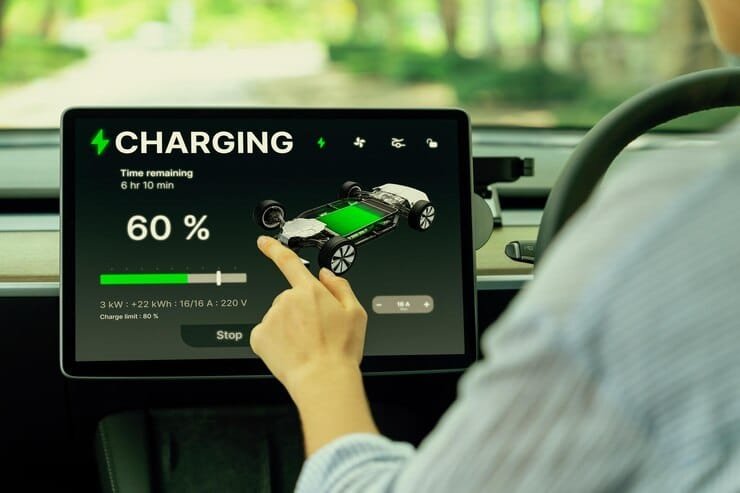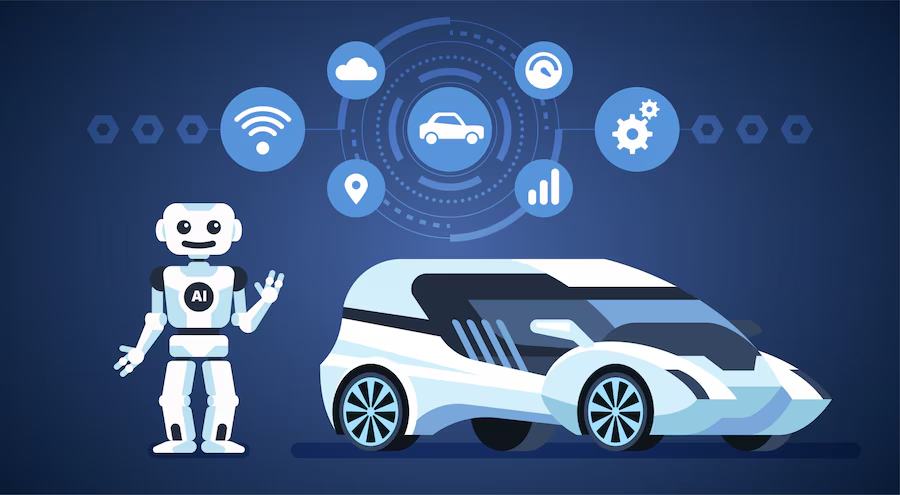The hum of the engine, once a reassuring rumble, now carries a subtle undercurrent of anxiety. It’s the anxiety of a software engineer staring at a cascade of error messages, the dread of a CEO facing a potential recall costing billions, the simmering unease of a driver suddenly losing control. We’ve reached a pivotal moment. The car, once a purely mechanical marvel, is now a complex symphony of software, a rolling data center hurtling down the highway. Remember the thrill of upgrading your phone’s OS? Now imagine that same upgrade, but with potentially fatal consequences.
This isn’t about minor glitches; this is about the existential threat posed by buggy car software. We’re not just talking about a frustrating infotainment system freeze; we’re talking about compromised braking systems, erratic acceleration, and complete system failures – scenarios that can turn a daily commute into a nightmare. The automotive industry, once a bastion of robust, tangible engineering, is now grappling with the volatile world of software development, a world where deadlines clash with safety regulations and ambitious features often come at a cost.
“It’s a race against time,” confided Sarah, a lead software engineer at a major automaker, during a recent industry conference. Her words echoed the sentiments of many: the pressure to innovate is immense, the complexity of modern vehicle software staggering. The question isn’t if buggy software will impact the industry, but when and how severely. This isn’t just a technical issue; it’s a societal one, a question of trust, safety, and the very future of the automobile. In the following pages, we’ll delve into the heart of this crisis, exploring the challenges, the vulnerabilities, and the crucial steps needed to prevent a catastrophic crash – not just of a single vehicle, but potentially, of the entire industry.
The vehicle software market is hurtling towards a future as electrifying as the EVs themselves, a future painted with both dazzling opportunities and daunting challenges. Imagine a world where your car anticipates your needs, seamlessly integrates with your life, and practically drives itself. That’s the promise, but the journey is paved with complex trends that demand strategic brilliance.

Positive Trends: The Open Road Ahead
- The Rise of the Software-Defined Vehicle (SDV): This isn’t just a buzzword; it’s a revolution. Cars are becoming platforms, constantly updated with new features and functionalities via Over-the-Air (OTA) updates. Think Tesla’s frequent software releases adding features like enhanced Autopilot capabilities or new gaming options. This creates a recurring revenue stream, a goldmine for savvy players. Actionable Insight: Invest heavily in agile development methodologies and robust OTA infrastructure. Embrace a modular software architecture to enable rapid iteration and customization.
- The Explosion of Automotive Data: Every drive generates a wealth of data – location, driving style, vehicle performance – a treasure trove for personalized services and predictive maintenance. Companies like BMW are already leveraging this to optimize their services and anticipate maintenance needs. Actionable Insight: Develop data analytics capabilities to extract valuable insights, focusing on data security and privacy compliance. Partner with data providers and experts to unlock the full potential of this burgeoning resource.
- The Electrification and Autonomous Driving Push: Electric vehicles (EVs) and self-driving cars are not just technological marvels; they’re software-intensive machines. The software powering these technologies is as crucial as the battery or the engine. Consider the complexities of managing autonomous driving systems, a task requiring vast computing power and advanced algorithms. Actionable Insight: Invest in talent acquisition, particularly in areas like AI, machine learning, and embedded systems. Develop strategic partnerships with chip manufacturers and sensor providers to gain a competitive edge.
Adverse Trends: Navigating the Potholes
- Cybersecurity Threats: Connected cars are vulnerable to hacking, creating safety and privacy risks. A single breach could have devastating consequences. Actionable Insight: Prioritize cybersecurity from the design phase, employing robust encryption, intrusion detection systems, and regular security audits. Transparency and proactive communication with customers regarding security measures will also build trust.
- The Complexity of Software Integration: Integrating different software modules from various suppliers is a monumental task, fraught with compatibility issues. A single point of failure in one module can cripple the entire system. Actionable Insight: Develop strong partnerships with key suppliers, focusing on open standards and collaborative development. Invest in robust testing and validation processes to ensure seamless integration and system reliability.
- The Talent Gap: The automotive industry is facing a shortage of skilled software engineers, particularly those with expertise in embedded systems and AI. Competition for talent is fierce. Actionable Insight: Invest in training programs and apprenticeships to develop the next generation of automotive software engineers. Collaborate with universities and research institutions to foster innovation and attract top talent.
The future of the vehicle software market is a thrilling race, a contest between innovation and disruption. By proactively addressing these trends, companies can not only navigate the challenges but also seize the opportunities, driving towards a future where vehicles are as intelligent and responsive as their drivers. The road ahead is long, but the destination – a truly connected and autonomous future – is worth the journey.
Healthcare: Imagine a fleet of refrigerated trucks, their software-controlled temperature monitoring systems a lifeline for organ transplants. The software, a silent guardian, sends real-time alerts if temperatures deviate even slightly from the critical range. A frantic call from the system jolts a dispatcher into action; a rerouting decision, made in seconds, saves a precious cargo – and a life. The success of the mission, a silent victory logged in the software’s unassuming database, underscores the critical role of vehicle software in the life-saving industry.
Technology: A tech company uses a fleet of self-driving vans to deliver equipment, mapping their routes with pinpoint accuracy thanks to sophisticated AI. The software analyzes traffic patterns in real-time, adapting routes and optimizing delivery schedules. “It’s like having a thousand extra eyes on the road,” one logistics manager enthused, as he watched the real-time data stream on his screen, a symphony of efficiency unfolding. The end result? Faster deliveries, lower costs, and happier customers – a testament to the power of intelligent vehicle software.
Automotives: Picture a bustling car factory, where robots dance to the rhythm of a meticulously crafted software program. This software orchestrates the precise movements of robots assembling cars, flawlessly synchronizing their actions in a ballet of industrial precision. A slight malfunction in one component, detected by the software’s vigilant sensors, sends a cascading alert, halting production before a minor issue becomes a major crisis. This real-time feedback loop, powered by clever software, safeguards quality and reduces costly downtime, painting a picture of efficiency painted in ones and zeros.
Manufacturing: Consider a vast manufacturing plant, its sprawling grounds crisscrossed by automated guided vehicles (AGVs). These silent workhorses, guided by sophisticated software, transport materials between different stations, never colliding, always efficient. The software, a complex neural network, continuously learns and adapts, optimizing routes based on real-time data from sensors and production schedules. The hum of the machines, the rhythmic movement of the AGVs, all orchestrated by the unseen hand of the software, is a symphony of automated manufacturing. A supervisor, watching the smoothly flowing operation, nods with satisfaction, a quiet testament to the software’s quiet competence.
“We need to move faster,” Sarah, Head of Strategy at AutoSoft, declared in the Q2 meeting. “The market’s shifting too quickly.” Their focus in 2023 and beyond was aggressively pursuing strategic partnerships. They didn’t just want to integrate with other companies; they wanted deep collaboration, focusing on joint development of autonomous driving features with sensor specialist, SensoTech. This inorganic strategy leveraged SensoTech’s expertise, speeding AutoSoft’s time to market.
Meanwhile, across town at DriveTech, their CEO, Mark, championed a different approach. “Organic growth is our strength,” he’d insist. DriveTech invested heavily in upskilling their existing engineering teams in AI and embedded systems, crucial for the next generation of vehicle software. This included sponsoring several internal hackathons focused on innovative user interface designs and over-the-air software updates, directly improving their product offerings and efficiency.
The strategy at Electrify Motors took a dual approach. They pursued a significant acquisition of a small but innovative cybersecurity firm, bolstering their safety credentials and instantly expanding their suite of security solutions. Simultaneously, they ramped up internal R&D, focusing on developing a standardized, modular software architecture for their electric vehicle platforms – an organic strategy aimed at long-term cost efficiency and scalability. This allowed them to rapidly deploy new features and reduce the complexity of future software updates.
However, a challenge emerged. “The talent war is real,” sighed Elena, AutoSoft’s CTO. Competition for skilled engineers was fierce. To combat this, AutoSoft, alongside DriveTech, initiated joint university partnerships to cultivate a pipeline of future software engineers— a long-term, organic approach that aimed to secure the talent needed for sustained growth. This proactive approach signaled a shift in industry focus – attracting and nurturing talent became as critical as any technological advancement. The race to dominate the vehicle software space wasn’t just about technology; it was about people, partnerships and a carefully balanced approach between organic and inorganic growth.

Outlook & Summary: Navigating the Software Storm
The automotive industry is on the precipice of a digital tsunami. For years, we’ve watched the slow creep of software into our vehicles; now, it’s a tidal wave. The question isn’t if buggy car software will impact the industry, but how severely. This article peeled back the layers of complexity, revealing the vulnerabilities inherent in the rapid expansion of vehicle software – a space that’s far more intricate than any smartphone OS. We explored real-world examples of failures, not as detached case studies, but as cautionary tales whispered around hushed boardrooms. Think of the infamous Therac-25 radiation therapy machine disaster, but on a scale exponentially larger, impacting millions of vehicles and potentially lives.
Looking ahead five to ten years, the automotive software landscape will be defined by a desperate need for robust, secure systems. Imagine the sheer volume of data generated by millions of connected cars – a feast for hackers, if security isn’t paramount. We’ll see a battle for supremacy between established players and agile tech startups, each striving to control the next generation of intelligent vehicles. The winners will be those who can master not just coding prowess, but also the delicate dance of regulatory compliance, ethical considerations, and consumer trust. This won’t just be about fixing bugs; it will be about fundamentally redesigning the entire software development lifecycle for the automotive sector, adopting agile methodologies, and embracing a culture of continuous improvement and security-by-design.
The core takeaway? The automotive industry is at a crossroads. Will it embrace the challenge and build a future of safe, reliable, and innovative software-defined vehicles? Or will it be swept away by the tide of its own creation? The future hinges on choices made today.
So, I ask you: Are you ready to navigate this software storm?






